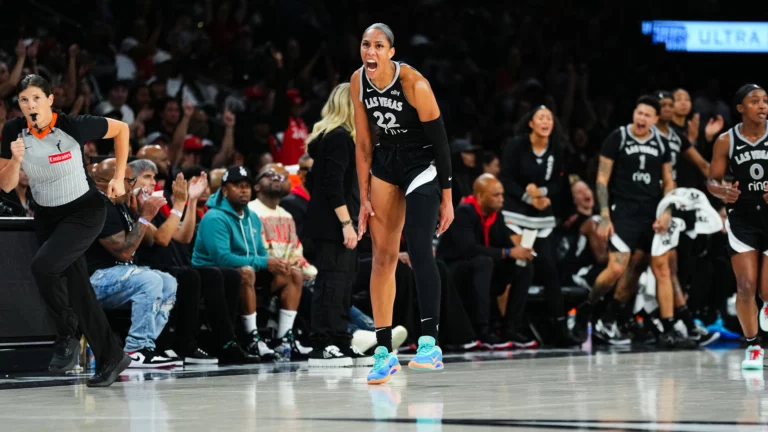
Let’s be real—being a professional athlete today means more than just winning races, hitting home runs, or scoring goals. If you are among the highest performers, it can also mean constantly defending yourself against one allegation or another. Enter the Athlete Biological Passport (ABP): sports’ most sophisticated tattletale. Think of it as a nosy roommate who didn’t actually see you take something sketchy; it just thinks, maybe, you’ve been acting a little… off. As if your blood levels suddenly spiked like your grades did the week your mom wrote your essay. Suspicious, right?
But seriously, the ABP is a fascinating (and controversial) tool in modern anti-doping efforts. Rather than testing athletes for banned substances directly, it tracks biomarkers—like blood and hormone levels—over time. Any abrupt changes might indicate doping, and- boom- you’re under investigation. Your body, literally, keeps receipts even if you throw the evidence away.
While the ABP has definitely caught some sneaky cheaters, it’s also stirred up its fair share of drama. Imagine getting grounded because your little sibling thought you ate the last cookie. You didn’t—but now no one trusts you near the snack drawer. Take Roman Kreuziger, a Czech cyclist whose ABP raised red flags back in 2014. His hemoglobin levels were all over the place, which resulted in a provisional suspension and a whole mess of legal battles. Kreuziger fought back, claiming the fluctuations were due to altitude training and natural physiological variances. He was cleared, eventually, but the damage to his reputation lingered.
Then there’s the Simona Halep saga, a recent and high-profile case that shook the tennis world. Halep, a two-time Grand Slam champ, once ranked No. 1 in the world, was handed a four-year ban in 2023. Initially, she tested positive for a banned substance (roxadustat, used to treat anemia), but things escalated when her ABP showed additional irregularities. Halep maintains her innocence, blaming contaminated supplements, but the combination of direct and ABP-based evidence made her case a tough one to fight. One minute you’re winning Wimbledon, the next you’re explaining your iron levels to a panel of lab-coated strangers.
Now, don’t get me wrong—the ABP isn’t evil. In fact, it’s a pretty genius way to outsmart dopers who know how to beat standard drug tests. It’s been used to ban cross-country skiers, cyclists, and track stars who probably thought they were being slick. The ABP is the anti-doping world’s quiet observer, always watching, always analyzing. It doesn’t need to see you take the pill—it just needs to notice your blood is suddenly Olympic-level thick.
But here’s the flip side: biology isn’t static. Travel, stress, training changes, disruptions in sleep, diet, age, and even menstruation can affect biological markers, which means athletes often find themselves trying to prove that their bio markers experienced a ‘normal variance’ while also under public scrutiny. That’s a tough gig. Imagine waking up puffy from salt overload and having to convince your coach you’re not secretly on steroids—it’s laughable, but that’s the level of pressure these athletes face.
At its best, the ABP levels the playing field and helps clean athletes rise without fear of being beaten by a cheat. At its worst, it’s an overzealous system that might mistake hard work—or even normal biology—for deception. Like any powerful tool, it depends on how it’s used, who’s interpreting the data, and how transparent the process is.
We need systems like the ABP to keep the games fair—but we need it within the due process framework to ensure our athletes are protected.
Author Profile
- Tessa Winkleman is a dynamic scholar-athlete and aspiring sports law professional. Raised in Las Vegas before heading to Michigan (Go Blue!), she earned a Division I volleyball scholarship to St. Francis College in Brooklyn. After transferring to Hunter College, she led her team as MVP, earning numerous athletic and academic honors. Tessa has interned at McShane & Bowie LLP and the PREA Investigation Unit at Rikers Island, combining her passions for justice and advocacy. She is set to pursue a master’s degree in Sports Law and Management at the Universidad Europea de Madrid, in partnership with Real Madrid FC.
Latest entries
 PoliticsJuly 10, 2025Courtside Diplomacy: How Tennis Became the Quiet Power Player in Global Politics
PoliticsJuly 10, 2025Courtside Diplomacy: How Tennis Became the Quiet Power Player in Global Politics BusinessJuly 9, 2025Red, White, and Grass Stains: What the 2026 FIFA World Cup in the U.S. Says About Soccer, Politics—and Lawn Care
BusinessJuly 9, 2025Red, White, and Grass Stains: What the 2026 FIFA World Cup in the U.S. Says About Soccer, Politics—and Lawn Care SportsJuly 4, 2025Gold Medals, Clean Reputations? The Curious Case of Sportswashing in 2025
SportsJuly 4, 2025Gold Medals, Clean Reputations? The Curious Case of Sportswashing in 2025 TennisJuly 3, 2025Ben Shelton Serves Up A Racket: When Tennis Meets Politics at Wimbledon
TennisJuly 3, 2025Ben Shelton Serves Up A Racket: When Tennis Meets Politics at Wimbledon

 Steelersforever.org
Steelersforever.org





